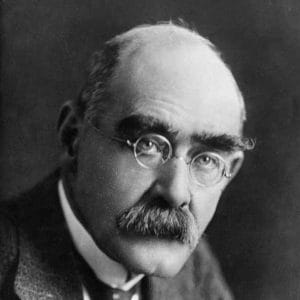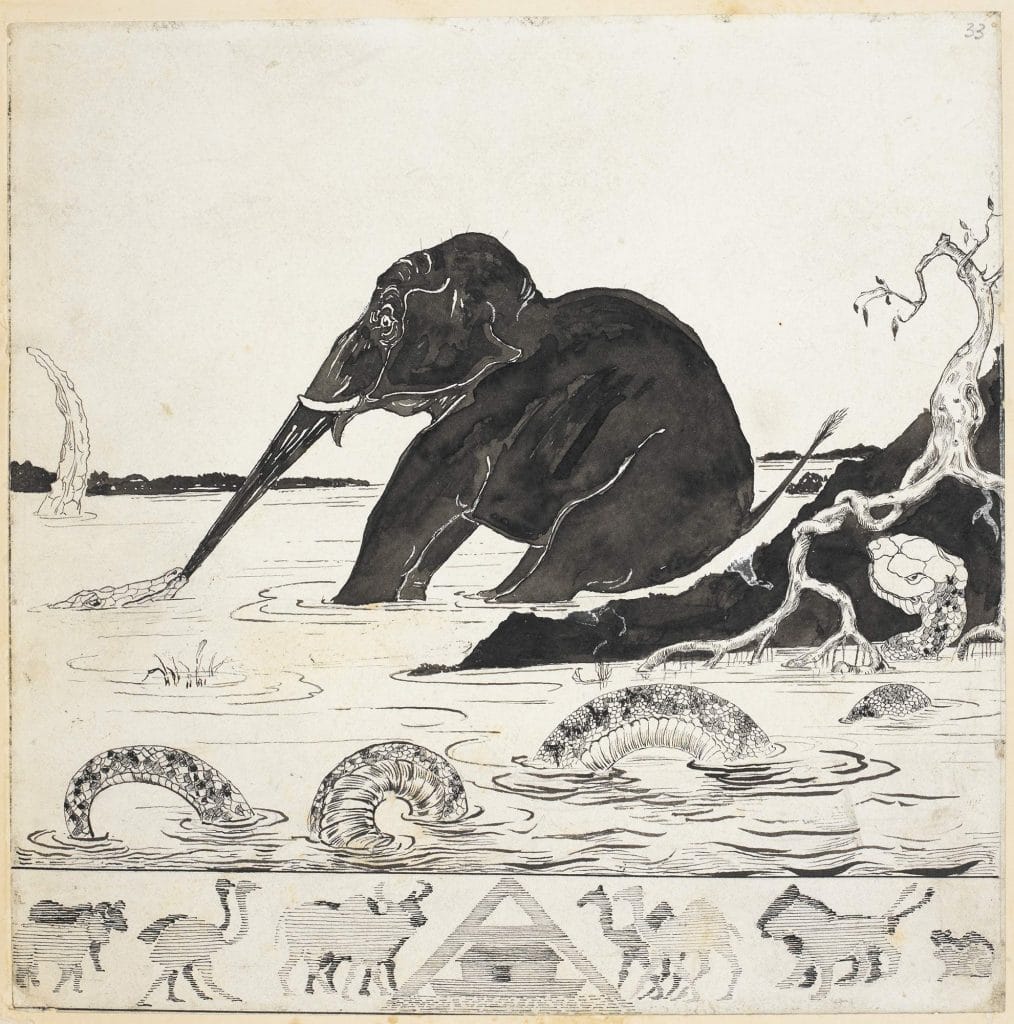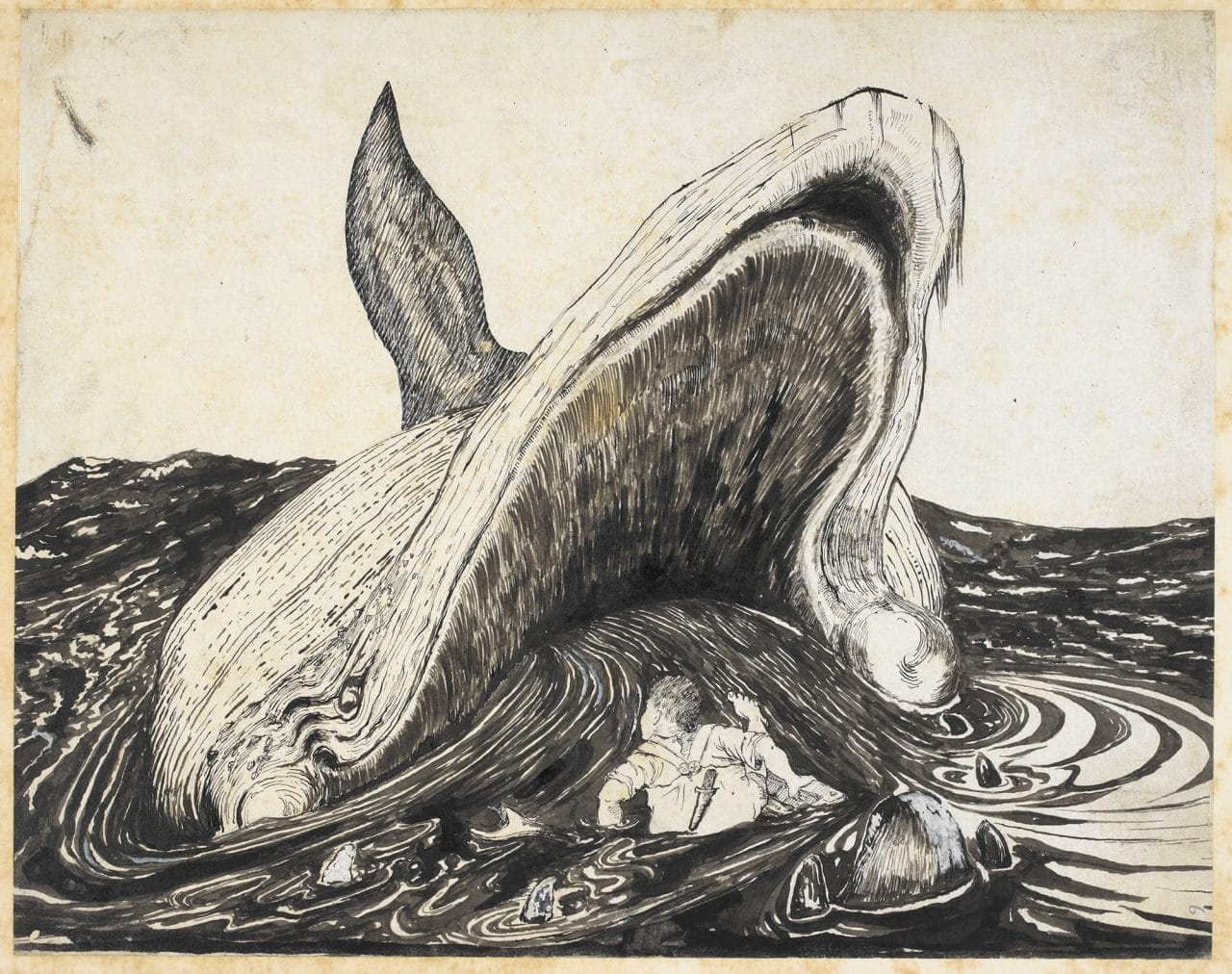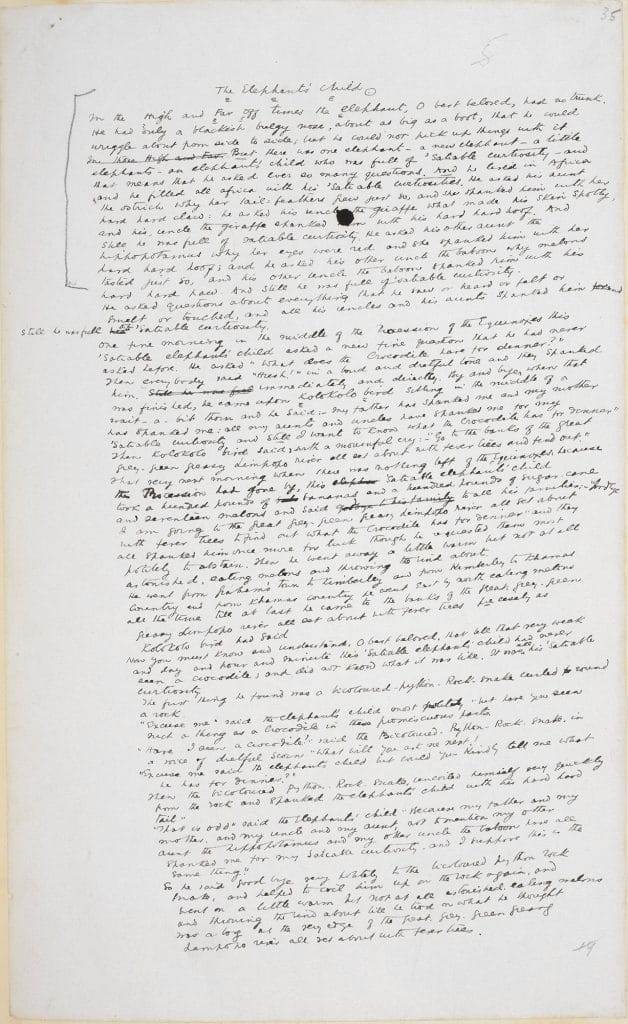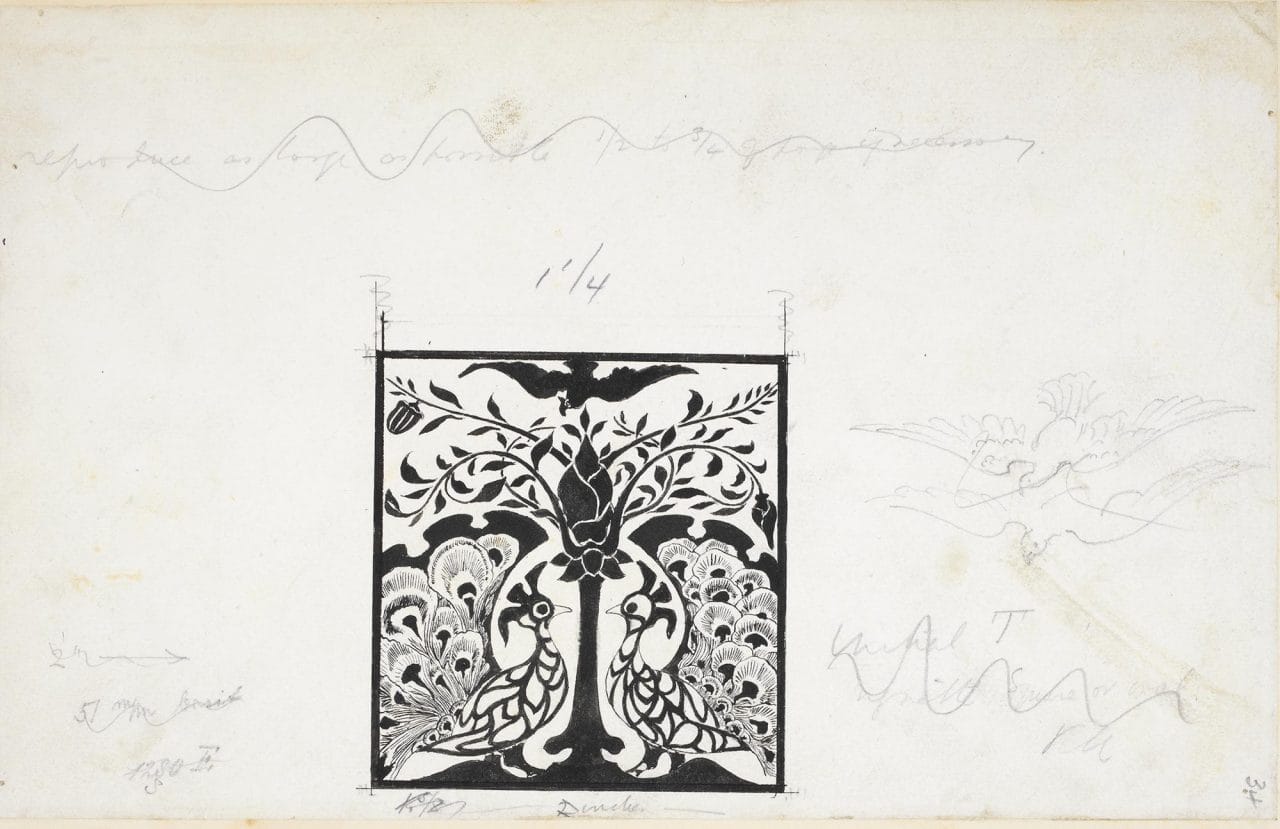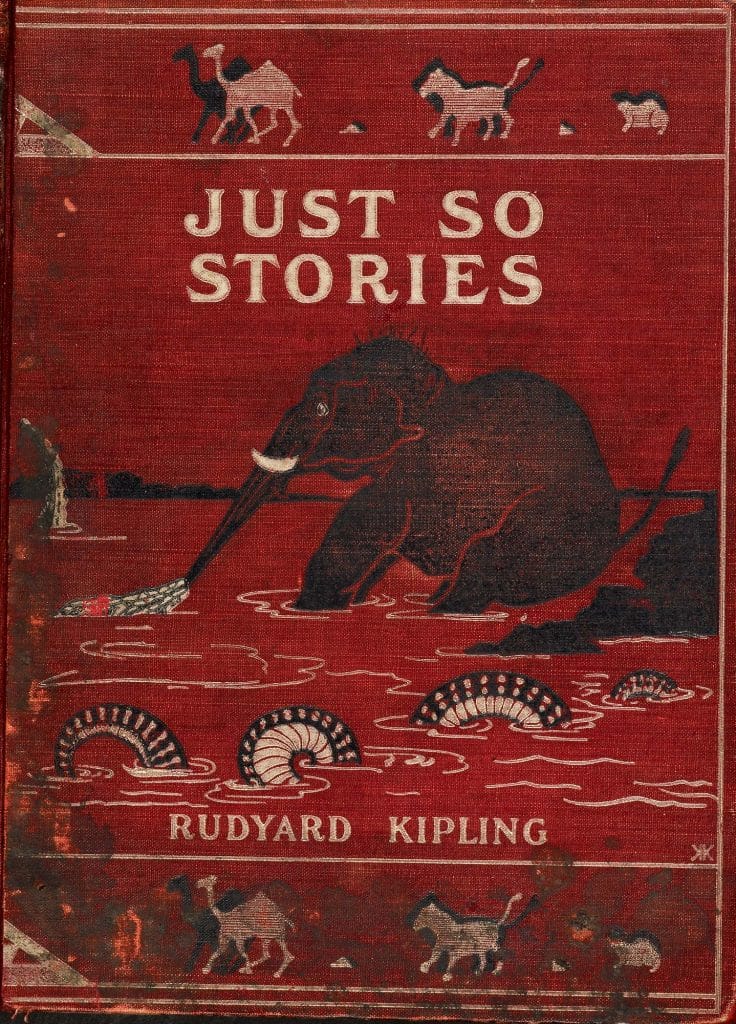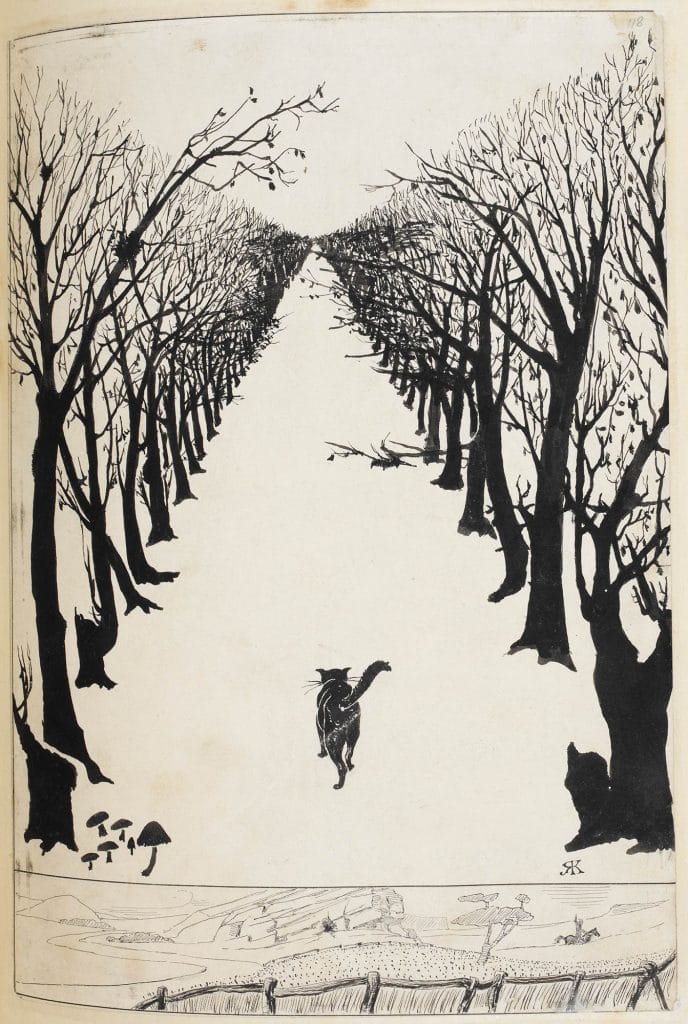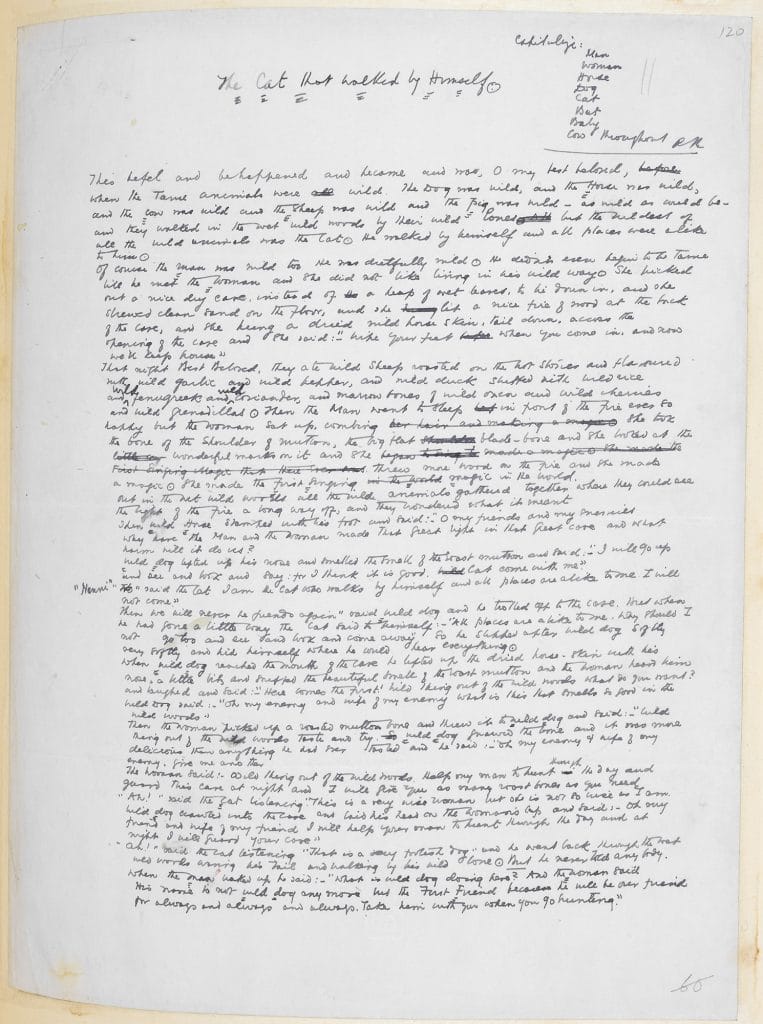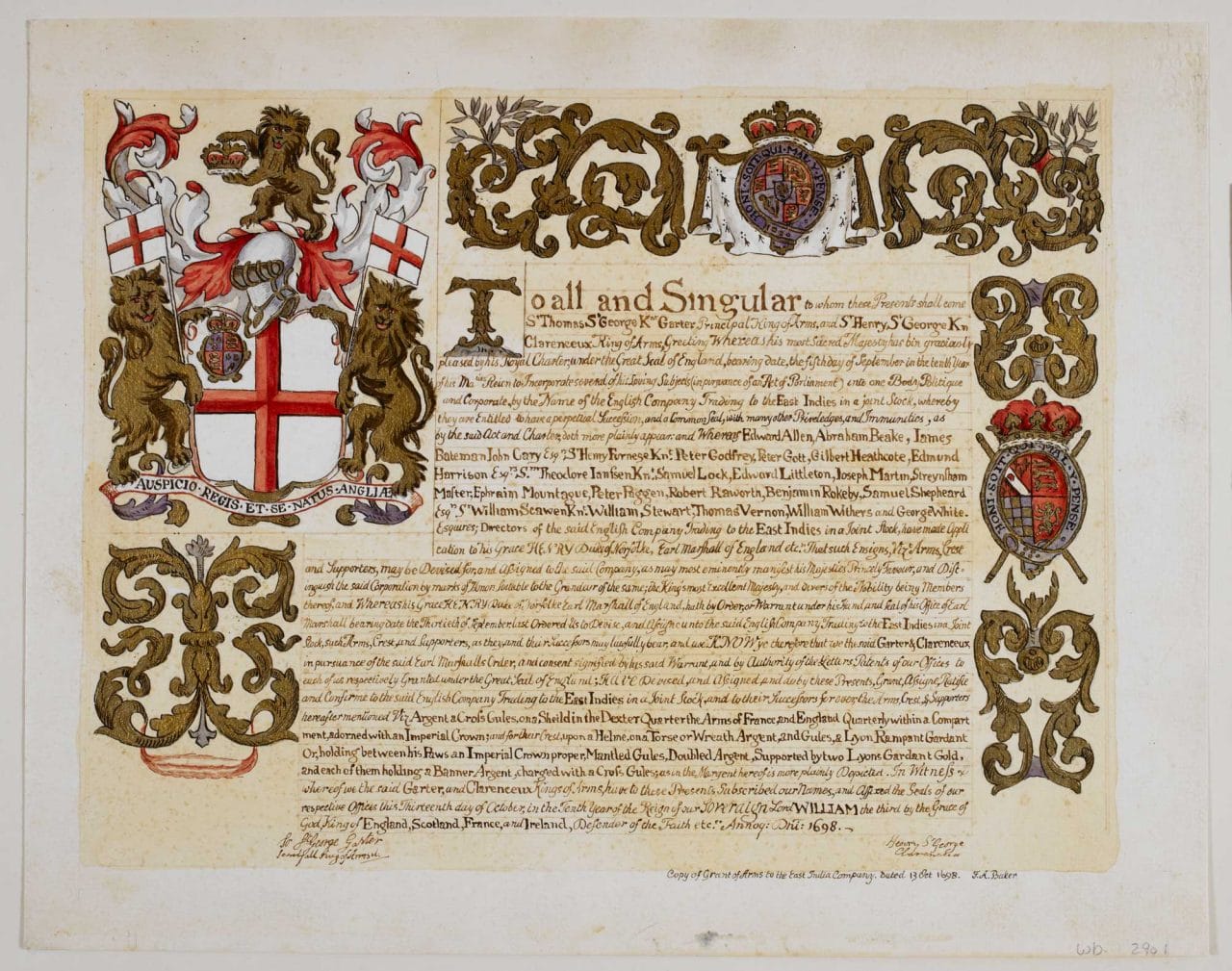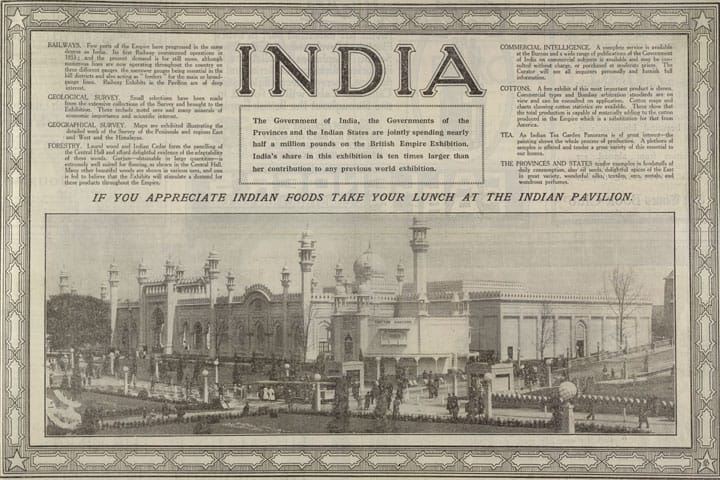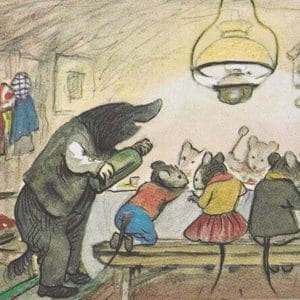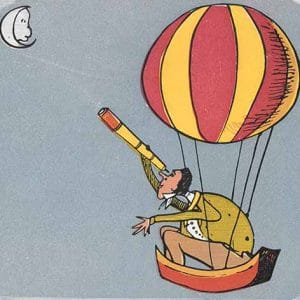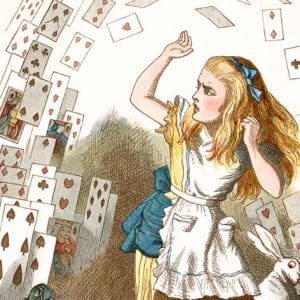
Rudyard Kipling’s Just So Stories
出版日期: 1902 文学时期: Victorian 类型: Children's Literature
Rudyard Kipling told his children gloriously fanciful tales of how things in the world came to be as they are. He wrote them down for publication as the Just So Stories in 1902, just three years after the tragic death of his daughter for whom they had first been invented. Since their publication, generations of children were tucked into bed with readings of highly imaginative and wildly improbable explanations such as how the elephant got his trunk.
What are the Just So Stories?
Kipling entertained his own children and those of his friends by inventing ingenious explanations of such questions as ‘How the Camel Got His Hump’ and ‘How the Leopard Got his Spots’. In 1902, he wrote them down for publication as the Just So Stories.
They are written in an amusingly grand style, peppered with long, and delightfully unlikely, invented words – a comical exaggeration, perhaps, of the formal ways of speaking Kipling heard in India. Each story includes a short poem, and the first edition features Kipling’s own illustrations, along with extended glosses which show the writer in a more intimate and less performative role.
Kipling’s use of alliteration and invented words in the Just So Stories locate his manipulation of language in a tradition dating back to the earliest English literature. The direct addressing of the reader in the repeated phrase ‘O best beloved’, running through all the stories, reinforces the intimacy of storytelling and recalls the first ‘best beloved’, Kipling’s daughter, Josephine, who had died of pneumonia in 1899 aged six.
Though Kipling’s writing for adults fell out of fashion, his children’s books were popular for much of the 20th century and the Just So Stories became a favourite across the English-speaking world.
Extract from The Elephant’s Child read by Geoffrey Palmer. Courtesy of Naxos Audiobooks.
Who was Rudyard Kipling?
Joseph Rudyard Kipling was born in 1865 in Bombay, during the ‘British Raj’, the era when the subcontinent of India was part of the British Empire. His father was an artist, who also taught at the city’s School of Art. When he was only five, Kipling and his sister, Alice, were taken back to England and left with foster parents in Southsea, where he attended a small private school. The colourful sights and sounds – and freedoms – of India were sorely missed. Kipling hated his foster home, which he later referred to as the ‘House of Desolation’.
At 12 he was sent to boarding school in Devon. The headmaster there was a friend of the family and encouraged Kipling’s interest in writing. Four years later he was back in India and working in Lahore as a journalist on two newspapers. In his spare time he penned poems and short stories. These were first printed in the newspapers, and then published as books. Through his travels all over India, he absorbed knowledge of Hindu customs and ways of thinking, though his experience of British colonial life remained central to his disposition.
Kipling’s early professional life was spent as a journalist in India, and his sharp observation of civilian and military life provided the material for several short stories which brought him success and celebrity. His use of colloquial dialect and accent in his poems, such as the Barrack Room Ballads (1892), show him to have been a great listener, and his poetry was always popular with the general reading public.
Why was Kipling important?
Kipling’s reputation was at its height during the first decade of the 20th century. He was offered the honour of a knighthood in 1899 and again in 1903. Both times he refused. But he did accept the Nobel Prize for Literature in 1907. The citation listed the qualities that gave his work such popularity in his own day. It praised his ‘virile humour’ in books and poems that ‘brought India nearer to home than the opening of the Suez Canal’. Kipling, it said, did more than any other writer ‘to draw tighter the bonds of union between England and her colonies’.
After the First World War, however, the tide of history relentlessly swept aside Kipling’s colonial vision. Values celebrated in his writings for adults soon seemed out of tune with the times. Political critics came to see him as old-fashioned at best, contemptible at worst. In the early 21st century, distance lends a less emotive view, and Kipling is now recognised as one of the most authentic voices of the life and character of the British Empire.
Kipling’s works were housed at Batemans, his Sussex home. In 1940, four years after Kipling’s death, his widow bequeathed a collection of his notes and drafts, known to the family as ‘the file’, to the British Museum Library, later the British Library.
What was the British Raj?
‘Raj’ means ‘rule’ in the languages of India. The British Raj refers to the years between 1858 and 1947 when the subcontinent of India – today’s India, Pakistan and Bangladesh – was a part of the British Empire.
The joint destiny of England and India began in 1600, the year the East India Company was established by royal charter to exploit trade between the two countries. A private army was built up to protect the Company’s interests. By the 18th century, the power of the Company had grown to a point where it challenged the authority of the British government.
Citing widespread corruption and abuse of power, Parliament passed a Regulating Act in 1733 which set financial restrictions on the Company and imposed a Governor-General of India. In 1858, the British government assumed total control. Eighteen years later, Queen Victoria was crowned Empress of India: the ‘jewel in the crown’ of her empire.
Despite mutual resentment and prejudice, the close association of the two cultures for more than two centuries left an indelible mark on the language and lives of both. During the 20th century, the growth of a strong nationalist movement brought British rule to an end. India and Pakistan gained their independence in 1947.
